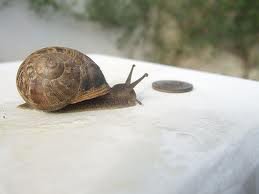We are what we repeatedly do. Excellence, then, is not an act, but a habit. Aristotle
A colleague here at Copley Raff constantly reminds me, and our clients, to “fish where the fish are.” By that she means to focus on the areas with the greatest potential payback and ROI. In terms of advancement “fishing,” for many NPOs, the major donor program is the most obvious place for high returns on efforts. Ironically, it is also the most elusive area of many advancement programs.
Time and again, my colleagues and I – through our assessment assignments – find major gift officers doing many tasks throughout their organizations. This work includes planning events, reviewing direct mail copy, attending many internal meetings, scheduling meetings, and conducting prospect research. Unfortunately, most of this activity contributes little to the work of relationship building and solicitation of valuable donors – the core responsibilities of a major gift officer. This is true in most small advancement shops and even in many large shops.
So what’s an alternative? Let’s take a closer look at the major gift program designed by The Virginia Mason Foundation, the fundraising arm of Virginia Mason Medical Center of Seattle, Washington. The entire healthcare system is adopting the Toyota Production System (TPS), a methodology introduced by the automobile manufacturer to reduce waste and improve outcomes. The foundation is also adopting elements of TPS to their development operations.
Fundamentally, the Foundation has gift officers only work on functions that lead directly to their success – closing big gifts for the organization. As a result, prospect research, scheduling discovery appointments, document generation, cultivation event planning, and other tactical responsibilities are no longer part of the gift officer’s list of to-dos. Gift officers are scheduled for discovery interviews with qualified prospects through skilled and trained telemarketers. The goal of the discovery meetings is to qualify the prospect for a five figure gift. If the meeting reveals that this is the case, the gift officer prepares an engagement and solicitation strategy that contains at least one monthly “move” that pulls the prospect – with moves concerning their expressed interest – toward a major gift ask and close.
The logistics behind this program are designed for success. Gift officers carry a portfolio of 20 active prospects. They each close on average about 50 asks per year. Their pipeline is continually updated and refreshed by other members of the advancement team. The Virginia Mason Foundation uses an elegant system of tracking and measuring the moves management progress, while at the same time creating outcome data that is proving quite useful in determining when to abandon pursuit of a prospect. This program is an effective mix of metrics, art, competency, and focus.
A perfect and successful example of “fishing where the fish are”…using the right pole and bait.
Regardless of shop size, advancement leaders need to take the time to insure that their gift officers are casting their lines where they should be – prospect discovery, engagement and solicitation – and delegating other less productive activities to others on the team.
Your takes:
1. Construct gift officer job descriptions with a strong emphasis on responsibilities that enable and reward success in closing major gifts for the organization on a regular basis.
2. Work with the entire advancement team to redesign the advancement operation to enable appropriate focus for each team member.
3. Measure your activities and outcomes for each development position in your shop and continually tinker with the system to keep it effective.
For more information about Copley Raff and its spectrum of not for profit consulting services, please see www.copleyraff.com.
Have a development, executive recruitment, or campaign strategy or management challenge? Let’s talk! Click here to connect with Rebekah Kaufman, Director of Consulting Services at CRI.


